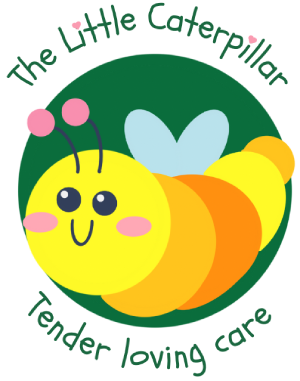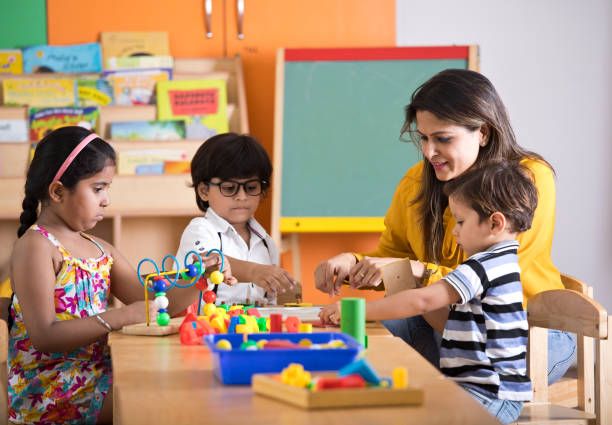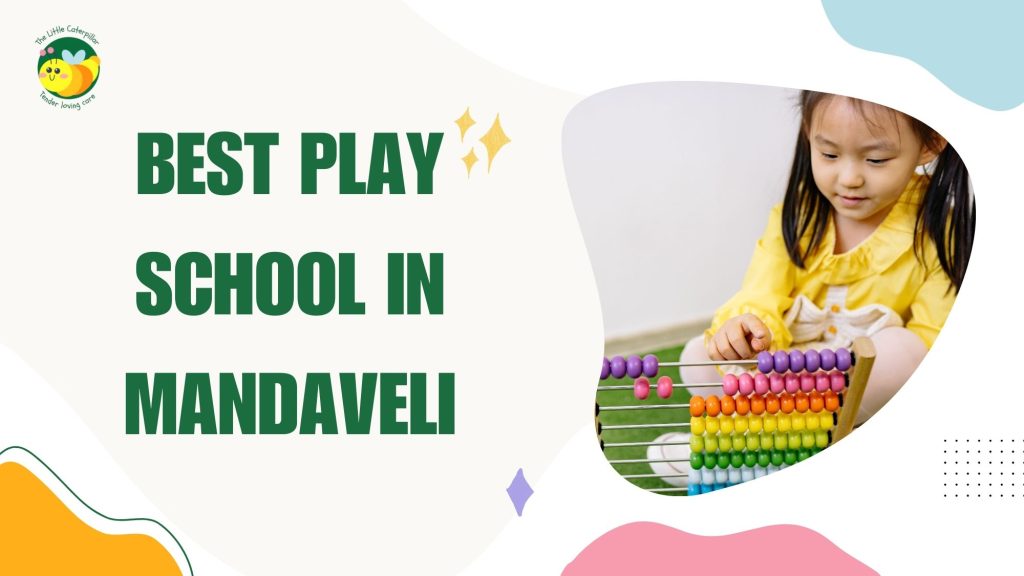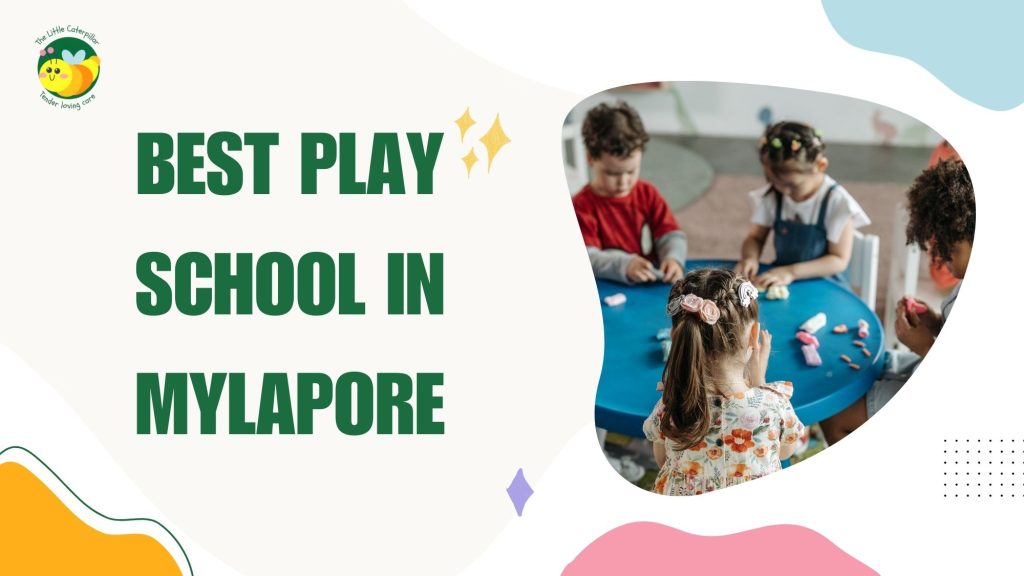Table of Contents
Introduction
The Little Caterpillar, a Chennai-based playschool, offers a unique early childhood education program rooted in the Montessori and Reggio Emilia philosophies. Catering to toddlers aged 1.5 to 4 years, the playschool fosters a holistic environment that celebrates each child’s individual creativity, curiosity, and developmental path. This essay explores how The Little Caterpillar cultivates a nurturing space where toddlers embark on a transformative learning journey.
The Montessori and Reggio Emilia Philosophy: Foundations of Inspiration
The Montessori method, developed by Maria Montessori, emphasizes self-directed learning, hands-on exploration, and the role of a prepared environment in fostering independence and creativity. Similarly, the Reggio Emilia approach, originating from Italy, places children at the center of their learning journey, valuing artistic expression, collaboration, and community engagement. Both philosophies share a profound respect for the child as a capable and curious learner, guiding educational practices at The Little Caterpillar.
Indian Flavor: Infusing Cultural Elements
Celebration of Indian Festivals
At The Little Caterpillar, Indian festivals such as Diwali, Holi, Eid, Pongal, and Navratri are celebrated with enthusiasm and cultural richness. These celebrations go beyond mere observance; they become immersive learning experiences where children engage in traditional crafts, storytelling sessions, and festive rituals. For example, during Diwali, children create colorful rangolis, make diyas (earthen lamps), and learn about the significance of lighting lamps to symbolize the victory of light over darkness.
Multilingual Environment
India’s linguistic diversity is celebrated through a multilingual environment at the playschool. Teachers from different states of India speak languages such as Tamil, Hindi, Telugu, and Kannada among others. Children are exposed to multiple languages through songs, greetings, and language-specific activities, fostering language acquisition and appreciation for linguistic diversity.
Art and Craft Inspired by Indian Culture
Art activities at The Little Caterpillar draw inspiration from India’s rich artistic traditions. Children explore traditional Indian art forms such as Madhubani painting, Warli art, and Kalamkari textiles. They use natural materials and vibrant colors to create their own interpretations, connecting with India’s cultural heritage through creative expression.
The Role of Teachers: Nurturing Creativity and Curiosity
Facilitators of Learning
Teachers at The Little Caterpillar play a pivotal role in creating an environment where creativity and curiosity thrive. They act as facilitators rather than instructors, observing children’s interests and inquiries, and guiding them towards meaningful learning experiences. Teachers scaffold learning through open-ended questions, provocations, and hands-on activities that inspire exploration and discovery.
Cultural Ambassadors
As ambassadors of Indian culture and values, teachers share stories, myths, and folktales that reflect India’s diverse cultural tapestry. These narratives ignite children’s imaginations and deepen their understanding of Indian traditions, fostering a sense of pride and connection to their cultural heritage.
Collaborators with Parents
Parents play an integral role in the educational journey at The Little Caterpillar. Teachers collaborate with parents to understand each child’s unique strengths, interests, and cultural background. This partnership ensures continuity between home and school environments, supporting holistic development and personalized learning experiences.
Educational Significance of Creative Exploration
Cognitive Development
Creative exploration through art, music, and imaginative play stimulates cognitive processes such as problem-solving, decision-making, and spatial reasoning. Children at The Little Caterpillar develop critical thinking skills as they experiment with materials, manipulate objects, and explore cause-and-effect relationships in their play.
Social-Emotional Growth
Engaging in creative activities nurtures children’s social-emotional development by promoting self-expression, empathy, and cooperation. Through collaborative art projects and dramatic play, toddlers learn to communicate ideas, negotiate roles, and develop a sense of belonging within their peer group.
Physical and Sensory Integration
Hands-on activities at the playschool, such as sensory bins, clay modeling, and outdoor explorations, promote fine and gross motor skills development. Children refine their motor coordination, dexterity, and spatial awareness through manipulative play and physical movement.
Creating a Stimulating Environment: Spaces for Exploration and Discovery
Art Studios and Ateliers
The playschool features dedicated art studios and ateliers where children engage in creative processes without constraints. These spaces are equipped with a variety of art materials, natural elements, and open-ended resources that inspire children to express themselves freely and imaginatively.
Outdoor Learning Environments
Nature plays a central role in the educational experience at The Little Caterpillar. Outdoor spaces are designed to stimulate exploration, sensory experiences, and physical activity. Children interact with natural materials, observe seasonal changes, and engage in outdoor play that promotes resilience and environmental stewardship.
Role of the Environment as the Third Teacher
In line with the Reggio Emilia philosophy, the physical environment at the playschool is intentionally designed to provoke children’s curiosity and creativity. Classrooms are organized into learning centers that invite children to explore different themes, materials, and sensory experiences independently or collaboratively.
Theoretical Framework and Research Support
Constructivist Learning Theory (Piaget)
Emphasizes the active role of children in constructing their knowledge through interactions with the environment. The hands-on, inquiry-based approach at The Little Caterpillar supports children’s cognitive development as they explore, manipulate, and experiment with materials.
Socio-Cultural Theory (Vygotsky)
Highlights the importance of social interactions and cultural context in children’s learning and development. At The Little Caterpillar, collaborative projects and cultural celebrations promote social skills, cooperation, and shared knowledge construction among toddlers.
Reggio Emilia Approach
The playschool’s adoption of the Reggio Emilia approach enriches children’s learning experiences through project-based investigations, documentation of learning processes, and the integration of arts and cultural elements. These practices support children’s holistic development and foster a lifelong love for learning.
Conclusion
In conclusion, The Little Caterpillar playschool in Chennai embodies a nurturing educational environment where toddlers embark on a journey of creativity, curiosity, and cultural exploration. Inspired by the Montessori and Reggio Emilia philosophies, and infused with a vibrant Indian flavor, the playschool celebrates diversity, fosters independence, and nurtures each child’s unique talents and interests.
Founder Nikita Viswanath and the dedicated team of teachers at The Little Caterpillar play a pivotal role in creating a supportive learning community where children thrive. By embracing India’s cultural heritage, promoting creative expression, and honoring children’s natural curiosity, the playschool prepares toddlers for a future filled with wonder, resilience, and a deep appreciation for their cultural identity.
As The Little Caterpillar continues to innovate and evolve, its commitment to holistic education remains unwavering. Through collaborative partnerships with parents, engagement with diverse cultural traditions, and a rich array of learning experiences, the playschool empowers toddlers to grow into confident, compassionate individuals who contribute positively to their communities and the world beyond—a testament to the transformative power of early childhood education done with love and dedication.



